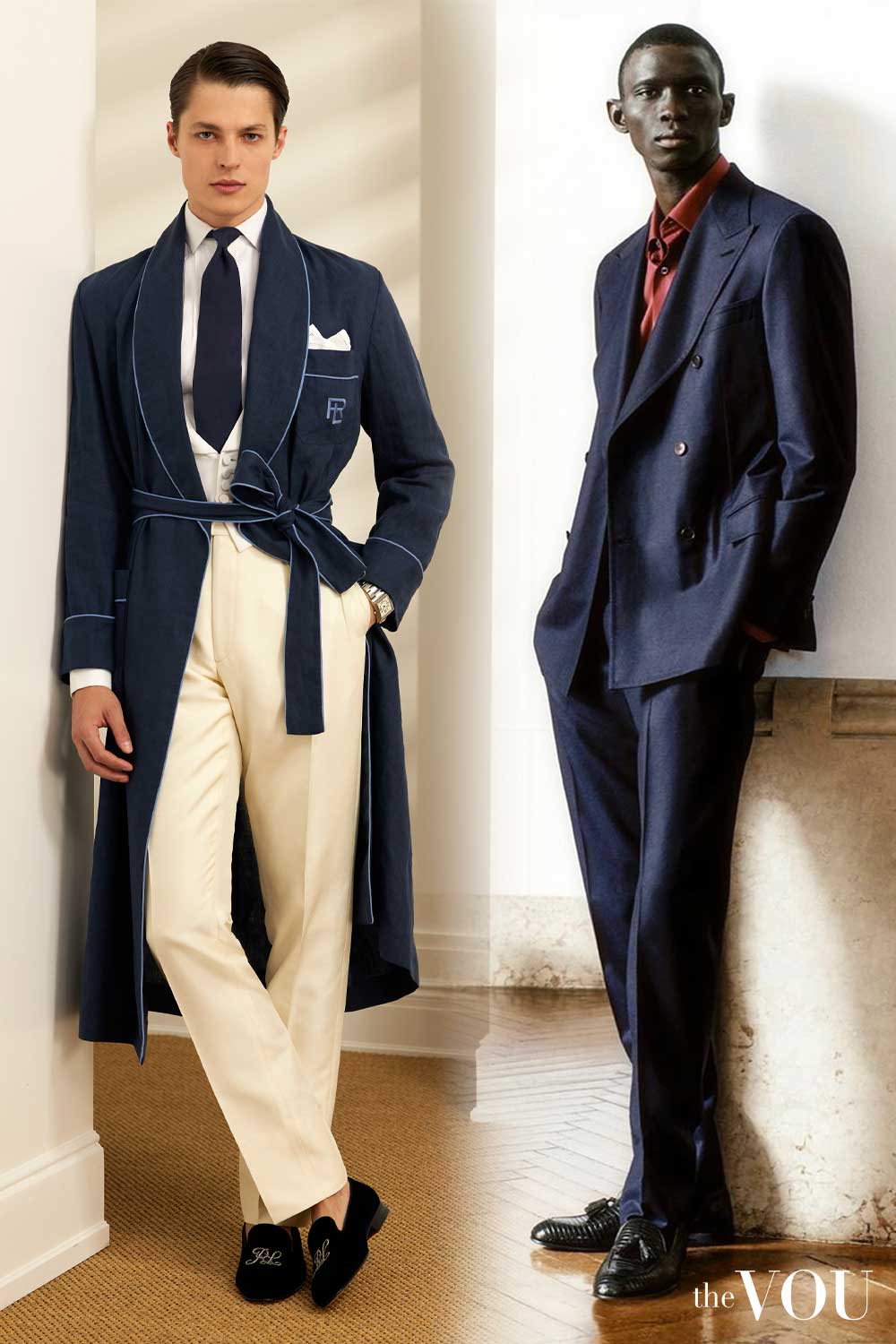The Science Behind Breathability in Branded Clothing Materials
The Science Behind Breathability in Branded Clothing Materials
Blog Article
Comprehending Garments: The Relevance of Fabric Selections in Your Closet
The choice of fabric in apparel plays a critical role in both appearances and functionality. Various materials use differing levels of comfort, toughness, and breathability, directly affecting the user's experience. Comprehending these nuances can enhance one's closet markedly. Several neglect exactly how these selections can impact not just individual design, however additionally sustainability. What fabric decisions could redefine your wardrobe and straighten it with both design and obligation?
The Function of Fabric in Style and Performance

Usual Textile Types and Their Characteristics
When picking clothing, recognizing the attributes of common fabric types is crucial for making notified choices. Cotton, a widely-used all-natural fiber, is understood for its breathability, softness, and flexibility, making it appropriate for sportswear and daily garments. Bed linen, an additional natural choice, flaunts excellent moisture-wicking properties and a distinct appearance, ideal for cozy climates.Wool, typically favored for its warmth and longevity, varies in excellence; merino wool is soft against the skin, while coarser kinds are made use of for outerwear. Synthetic materials like polyester and nylon supply toughness and resistance to creases, making them prominent for activewear and traveling garments. Finally, blends, which integrate all-natural and synthetic fibers, can improve performance while keeping convenience. By identifying these fabric qualities, people can choose clothing that straightens with their way of living and aesthetic preferences.
Breathability and Convenience: Picking the Right Fabrics for Various Climates
Picking the ideal materials for numerous climates can substantially enhance comfort and overall wearability. Breathable products are vital in warm climates, as they permit air blood circulation and dampness dissipation. Fabrics such as cotton, bed linen, and moisture-wicking synthetics successfully draw sweat away from the body, keeping the user cool and dry. Conversely, in cooler climates, thicker fabrics like wool or fleece offer insulation while maintaining breathability, making certain warmth without overheating.Additionally, the choice of material weight plays an essential duty; light-weight fabrics are more effective for summer, whereas heavier choices are matched for winter wear. Comprehending the distinct buildings of each material allows individuals to clothe properly for differing climate condition. Inevitably, picking comfy and breathable textiles customized to specific environments can significantly enhance daily comfort and improve the overall experience of putting on garments.
Sturdiness and Treatment: Exactly How Material Influences Long Life of Your Wardrobe
Selecting the right products can significantly affect the durability and treatment requirements of a wardrobe. Fabrics such as cotton and polyester are known for their strength and convenience of upkeep, making them perfect for day-to-day wear. In contrast, delicate products like silk and shoelace require even more cautious handling and specialized cleaning techniques, which can increase the moment and initiative required for care. Branded Clothing.Durability is likewise affected by the textile's weave and surface; firmly woven fabrics have a tendency to resist wear and tear far better than freely woven options. Furthermore, artificial blends frequently offer boosted longevity, incorporating the most effective high qualities of several fibers.Understanding the treatment guidelines for each material is crucial, as inappropriate drying or cleaning can cause premature wear. Inevitably, choosing sturdy materials can bring about a longer-lasting closet, reducing the regularity of replacements and adding to a more sustainable fashion selection
The Impact of Material on Fit and Silhouette

Sustainable Textile Options: Making Eco-Friendly Choices
The influence of fabric prolongs beyond fit and shape to incorporate environmental variables, triggering a growing rate of interest in sustainable material choices. Green fabrics, such as natural cotton, hemp, and Tencel, are gaining grip among customers who prioritize sustainability in their closets. These products are commonly generated with fewer chemicals and water, reducing their ecological footprint.Additionally, recycled fabrics, made from post-consumer waste, provide browse around here an ingenious option to the textile sector's pollution problem. Brands progressively embrace openness in their sourcing methods, allowing consumers to make informed decisions regarding their purchases.Choosing lasting materials not just sustains ethical methods however also motivates the garment industry to embrace even more responsible production methods. As awareness of ecological problems rises, individuals are urged to assess the long-lasting effect of their material choices, fostering a movement in the direction of a more ecologically conscious and sustainable method to style.
Boosting Style: Just How Fabric Can Transform a Clothing
While numerous may concentrate on shade and cut when choosing an attire, the choice of fabric plays a necessary duty in raising style and improving overall appearance. Various materials communicate distinct moods and messages; for example, silk emanates high-end and sophistication, while denim uses an informal, unwinded vibe. The texture and drape of a fabric can significantly change the shape, with organized materials giving a refined look and softer ones creating a much more fluid, loosened up aesthetic.Moreover, the weight of the material affects wearability throughout periods. Lightweight materials like linen and cotton are perfect for summertime, while much heavier materials such as woollen and velvet supply heat and style in colder months. Understanding fabric residential or commercial properties, such as breathability and stretch, additionally encourages individuals to make enlightened choices that next page boost convenience without endangering style. Ultimately, the appropriate fabric can change a clothing from average to amazing, making it a crucial consideration in any wardrobe.
Frequently Asked Inquiries
Just how Do I Determine the Material Material of My Apparel?
To identify textile web content, one can check out care tags, conduct melt examinations for fiber recognition, or get in touch with textile swatches. These methods help separate materials, ensuring informed selections for garments care and upkeep in day-to-day wear.
Can Material Choice Affect My State Of Mind or Self-confidence?
Material choice can greatly influence a person's mood and self-confidence. Branded Clothing. Specific products might evoke feelings of convenience or beauty, while others can feel unflattering or restrictive, inevitably influencing self-perception and psychological well-being throughout the day
What Fabrics Are Ideal for Delicate Skin?
For people with sensitive skin, natural textiles like bamboo, cotton, and bed linen are often recommended. These products are breathable, hypoallergenic, and much less most likely to trigger irritability, making them ideal choices for convenience and skin health and wellness.
Exactly how Do I Correctly Wash and Look After Different Fabrics?
To appropriately care and wash for different textiles, one must take into consideration each product's details needs, including temperature level settings, cleaning agents, and drying approaches, making certain long life and maintaining the textile's initial top qualities for suitable use.
Exist Particular Fabrics for Athletic or Efficiency Put On?
Sports or performance wear frequently uses materials such as polyester, nylon, and spandex. These products are designed for moisture-wicking, breathability, and flexibility, enhancing activity and convenience during exercises while supplying sturdiness and support. Alternatively, in cooler environments, thicker textiles like wool or fleece offer insulation while keeping breathability, ensuring heat without overheating.Additionally, the option of material weight plays an essential duty; lightweight materials are preferable for summertime, whereas heavier options are suited for wintertime wear. In contrast, delicate materials like silk and shoelace require more mindful handling and specialized cleansing techniques, which can raise the time and effort needed for care.Durability is also influenced by the fabric's weave and coating; tightly woven materials tend to stand up to wear and tear better than loosely woven alternatives. In read the article comparison, inflexible materials can restrict activity but provide a traditional, sleek look.Moreover, the density and structure of the fabric can influence the visual understanding of body form. The impact of material extends beyond fit and shape to incorporate ecological factors, motivating a growing passion in sustainable material options. The structure and drape of a material can substantially alter the silhouette, with organized materials offering a polished appearance and softer ones creating a more fluid, unwinded aesthetic.Moreover, the weight of the material influences wearability throughout periods.
Report this page